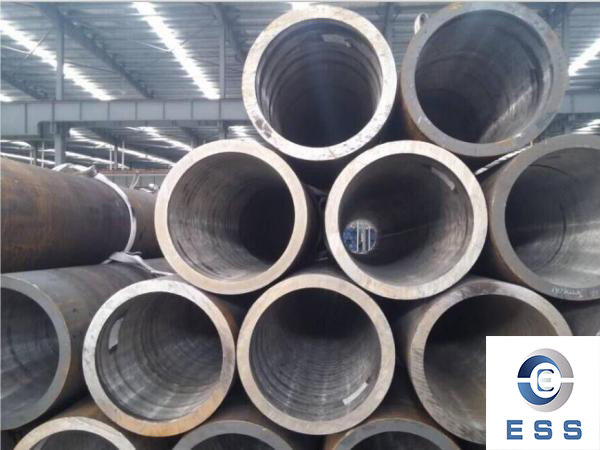Seamless Pipes Revolutionizing the Transportation Industry
Introduction:
In the dynamic world of transportation, efficiency, durability, and reliability are paramount. The seamless pipe industry has played a crucial role in meeting these demands by providing high-quality piping solutions that have transformed various sectors, including automotive, aviation, and maritime. Seamless pipes offer numerous advantages over their welded counterparts, making them an ideal choice for the transportation industry. This article aims to delve into the world of seamless pipes and explore how they are revolutionizing the transportation industry.

I. Understanding Seamless Pipes:
1.1 Definition and Manufacturing Process:
Seamless pipes, also known as seamless tubes, are cylindrical pipes with no welded joints or seams.
The manufacturing process involves the extrusion of a solid cylindrical billet through a piercing rod, resulting in a seamless hollow tube.
The absence of welds enhances the structural integrity and strength of the pipe.
1.2 Materials Used:
Seamless pipes are commonly manufactured from high-quality steel alloys, such as carbon steel, stainless steel, and alloy steel.
These materials offer exceptional strength, corrosion resistance, and heat resistance, making them suitable for diverse transportation applications.
II. Advantages of Seamless Pipes in the Transportation Industry:
2.1 Enhanced Strength and Safety:
Seamless pipes have uniform properties throughout the entire length, eliminating weak points associated with welded pipes.
This structural integrity ensures greater strength, reducing the risk of pipe failure during transportation operations.
The absence of welds also prevents the formation of stress concentration areas, enhancing the safety of transportation systems.
2.2 Superior Corrosion Resistance:
Seamless pipes made from stainless steel or other corrosion-resistant alloys provide excellent protection against chemical reactions, oxidation, and rust.
This corrosion resistance is vital in transportation applications, where pipes may come into contact with various fluids, chemicals, and environmental conditions.
2.3 Improved Flow Characteristics:
The seamless construction of pipes ensures a smooth and consistent inner surface, minimizing frictional losses during fluid transportation.
This characteristic facilitates efficient flow and reduces energy consumption, making seamless pipes ideal for fuel and fluid transportation in vehicles and vessels.
2.4 Increased Durability and Longevity:
Seamless pipes possess exceptional durability, enabling them to withstand high-pressure environments and temperature extremes.
The absence of weak points, such as welds, eliminates potential failure points, ensuring a longer service life.
These properties contribute to reducing maintenance costs and downtime, making seamless pipes a cost-effective choice for transportation applications.
III. Applications of Seamless Pipes in the Transportation Industry:
3.1 Automotive Sector:
Seamless pipes find widespread use in automotive manufacturing, particularly in exhaust systems, fuel injection systems, and hydraulic lines.
Their durability and resistance to corrosion and high temperatures contribute to the efficiency and longevity of vehicles.
3.2 Aviation Industry:
Seamless pipes are integral components in aircraft structures, engine systems, and hydraulic and pneumatic systems.
The high strength-to-weight ratio and reliability of seamless pipes are critical for ensuring the safety and performance of aircraft.
3.3 Maritime and Offshore Operations:
Seamless pipes are extensively employed in shipbuilding, offshore oil and gas exploration, and marine transportation.
They play a vital role in pipelines, ship structures, ballast systems, and fluid transfer systems due to their corrosion resistance and high pressure-handling capabilities.
3.4 Rail and Mass Transit Systems:
Seamless pipes are used in rail and mass transit systems for applications such as hydraulic systems, air brake systems, and pneumatic control systems.
Their ability to withstand vibrations, pressure fluctuations, and harsh operating conditions makes them essential for reliable transportation networks.
IV. Future Trends and Innovations:
4.1 Advanced Alloys and Composite Materials:
Ongoing research focuses on developing advanced alloys and composite materials for seamless pipes, offering enhanced strength, weight reduction, and improved performance.
These innovative materials have the potential to revolutionize the transportation industry by introducing pipes with superior properties.
4.2 Integration of Smart Technologies:
The integration of sensors and monitoring systems into seamless pipes can enable real-time monitoring of parameters such as temperature, pressure, and structural integrity.
This data-driven approach enhances safety, predictive maintenance, and operational efficiency in transportation systems.
Conclusion:
Seamless pipes have become an indispensable component in the transportation industry, offering numerous advantages over welded pipes. Their strength, durability, corrosion resistance, and improved flow characteristics have revolutionized various sectors, including automotive, aviation, maritime, and rail transportation. As advancements continue, seamless pipes will continue to play a crucial role in driving innovation and ensuring the efficiency and reliability of transportation systems worldwide.













 Eastern Steel Manufacturing Co.,Ltd not only improve product production and sales services, but also provide additional value-added services. As long as you need, we can complete your specific needs together.
Eastern Steel Manufacturing Co.,Ltd not only improve product production and sales services, but also provide additional value-added services. As long as you need, we can complete your specific needs together.










